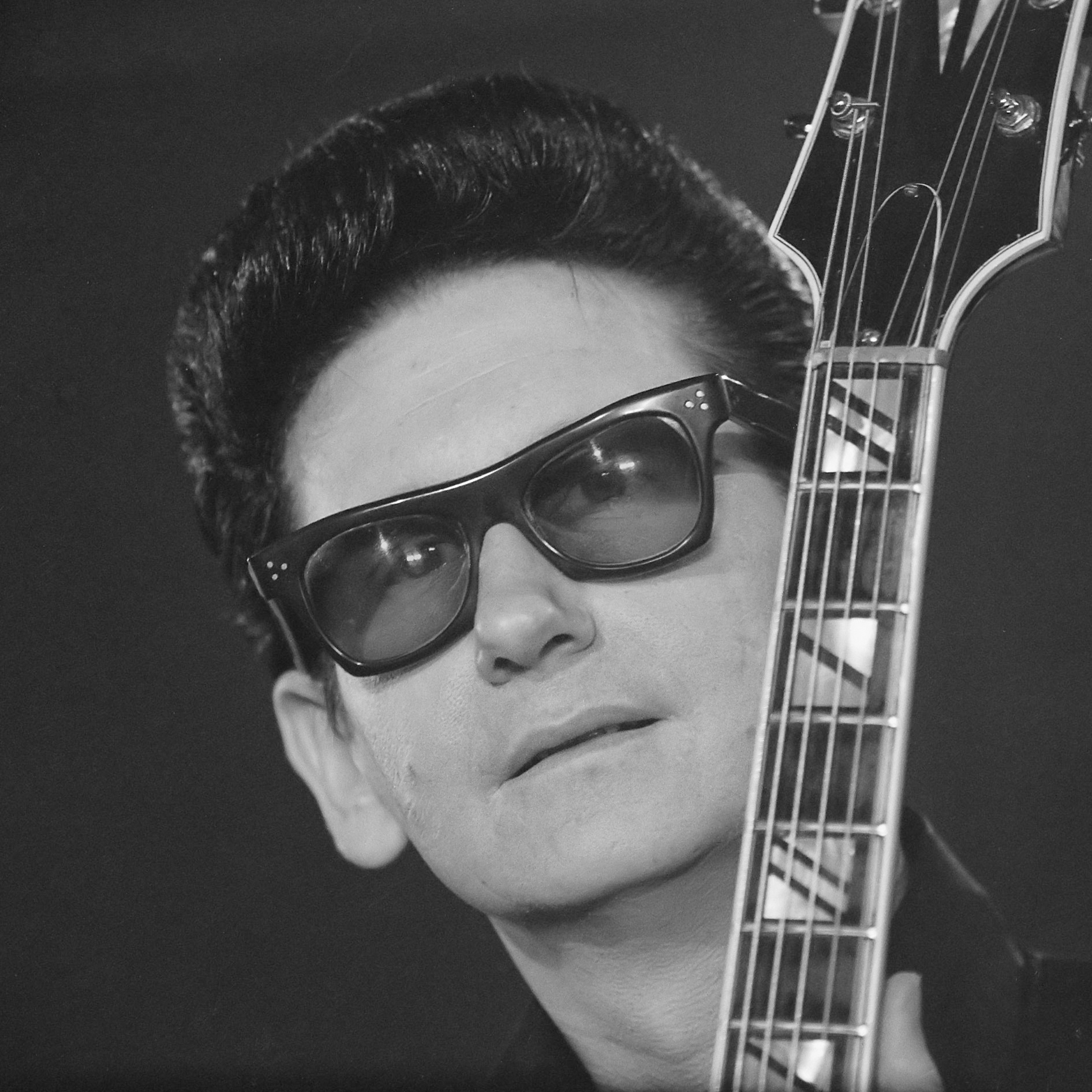A 'Lonely' friendship
A trans-Atlantic correspondence between filmmaker, ASU professor leads to US debut of Roy Orbison documentary in Tempe

His was the loneliest and most unlikely voice in rock and roll, with a posthumous career to die for.
That impassioned tenor voice combined with his trademark dark shades and perfectly coifed jet-black hair set Roy Orbison — “the Caruso of Rock” — apart as a recording artist and ultimately made him a legend.
His legend will be told in a new documentary that will examine the life and career of the iconic rock balladeer.
ASU’s Center for Film, Media and Popular Culture and Arizona Humanities are hosting the U.S. premiere of “Roy Orbison: One of the Lonely Ones” on Wednesday at Harkins Tempe Marketplace 16, 2000 E. Rio Salado Parkway. The free screening starts at 7 p.m. and will be followed by a discussion with British documentary filmmaker Jeremy Marre and Peter Lehman, director of the Center for Film, Media and Popular Culture, who is also interviewed in the film.
Lehman’s 2003 book, “Roy Orbison: The Invention of an Alternative Rock Masculinity,” served as a scholarly touchstone for Marre's vision and cemented a trans-Atlantic friendship that brought the U.S. premiere to ASU.
“He (Marre) sent me an email that essentially said, ‘I’ve read your book and they are the same themes I want to explore in a documentary I’m developing for the BBC on Roy Orbison’s life. I’d like to talk to you,’” Lehman said.
That electronic correspondence was followed by a phone call. Lehman was impressed with Marre’s vision and knowledge of material; he had also directed documentaries on such famous musicians as Marvin Gaye, James Brown and Otis Redding.
“The conversation showed me Jeremy was taking the subject matter very seriously in not repeating the same cliches that are often associated with music documentaries,” said Lehman, who is also a professor of film and media studies in the Department of EnglishThe Department of English is part of the College of Liberal Arts and Sciences..
“He was going to come to U.S. but ironically I was going to be in Italy for a silent-film festival that week. He asked me if I could stop in London on the way back, so I made some arrangements and it worked out perfectly.”
The extensive interview was followed by a friendly lunch. The two men vowed to stay in touch and did, even after the BBC aired the documentary in December 2015.
When Lehman received word that Marre would be stateside in March, the ASU professor of film and media studies invited him to ASU for a campus screening of "Roy Orbison: One of the Lonely Ones." He later asked Marre if he had a U.S. distribution deal in place for the film or if it had ever been shown in the U.S. Marre replied in the negative.
That’s when Lehman saw a larger potential coup for ASU and took it.
“Roy Orbison: One of the Lonely Ones” is told in the rocker’s own words, casting new light on the triumphs and tragedies that beset his career. Using previously unseen performances, home movies and interviews with many who have never spoken before, the film reveals Orbison’s remote Texas childhood, his battles to get his voice heard, and how he created such lasting hits as “Only the Lonely,” “Crying,” and “Oh, Pretty Woman.” The film follows Orbison’s roller-coaster life, often reflected in the dark lyrics of his songs, from success to rejection to rediscovery in the ’80s with the Traveling Wilburys.
“Roy Orbison is a legend today because of how unusual and distinctive he was within his time,” Lehman said. “He was a singer-songwriter and performer who ignored the norms in all three areas with a powerful three-octave voice singing emotional songs with complex structures that he performed with a dark, mysterious and nearly stationary persona.”
Roy Orbison in 1965. This and top photo courtesy Arizona Humanities
Though his persona was stationary, Orbison’s life was anything but stagnant.
The native Texan was born in 1936 and grew up in the towns of Vernon, Fort Worth and Wink, the latter a stark plains town, which he described later in life as “football, oil fields, oil, grease and sand.” Lehmann visited Wink in the early ’80s as part of his research for his Orbison book.
“Wink was a very small and desolate environment when I visited there, and Orbison talked about how lonely and disconnected he felt as a young man,” Lehman said. “He took a big interest in music and movies, and they became his escape. Both art forms became very important in his career.”
In 1955 a fateful meeting with Johnny Cash at a local TV station sparked Orbison’s musical career and landed him an invitation to Sun Records in Memphis, Tennessee.
Orbison’s tenure there was brief, but a 1960 move to Nashville-based Monument Records led to chart hits like “Only the Lonely,” “Mean Woman Blues,” “Running Scared,” “Crying,” “Blue Bayou” and “Oh, Pretty Woman.”
Mike Shellans, a music professor in the Herberger Institute for Design and the Arts and a musical performer since the age of 17, said the song “Crying” is the perfect example of Orbison’s talent and why he still resonates:
“You can feel where it’s going if you’re familiar with Roy’s music. You know the topic because it’s the topics he’s dealt with before, but the surprise lies in what’s ahead because you know the high notes are coming,” Shellans said. “To me, that’s the meat of the song, that’s what I’m waiting for. Then the end comes and he soars from above with the high notes and it’s the reward of the song.”
Watch ASU senior music lecturer Mike Shellans discuss Orbison's classic song "Crying." Video by Ken Fagan.
Orbison’s five-year run at Monument yielded nineteen Top 40 hits, nine of which made the Top 10 and two — “Running Scared” and “Oh, Pretty Woman” — reached No. 1. The latter was written about his wife, the former Claudette Frady, with whom he had three sons.
Lured by a $1 million contract, Orbison left Monument and signed with MGM Records. Unfortunately, the hits almost dried up immediately — and then tragedy struck in 1966 when his wife died in a motorcycle crash.
His life for the next few years would be marked by joy and sorrow. Two years after he was left a widower with three sons, he met his second wife, 18-year-old Barbara Wellhonen, while on tour in Leeds, England. A month later, in September 1968, a fire ripped through his Tennessee home while his parents watched his three children. Only the youngest of his sons survived.
“I can think of no parallel with an artist so overlooked during most of his life whose critical acclaim keeps building and building.”
— Peter Lehman, director of ASU's Center for Film, Media and Popular Culture
Wellhonen, who became his wife in 1969, was able to help Orbison through his grief. They had two boys of their own and settled into a life of domesticity. Orbison’s career had taken a backseat to his personal life, which considerably slumped in the late ’60s and throughout the ’70s.
“He became quite obscure during that time period. I was living in New York and teaching in the public school system,” Lehman recalled. “I often would go into the city and go from record store to record store to look for Orbison’s latest albums. Record store managers would often say, ‘Roy who?’ or ask, ‘Is he still alive?’ It was unbelievable because this wasn’t many years after he had all those hits.”
As the 1980s began to unfold, the entertainment world rediscovered Roy Orbison and his career enjoyed a major renaissance — including director David Lynch using Orbison’s song “In Dreams” for his 1986 cult film “Blue Velvet” to great effect.
“It’s one of the most distinctive uses of a rock and roll song in a movie,” Lehman said. “His songs were naturally dramatic, and the critics who were never big on Orbison eventually came around because of film directors and other musicians and said, ‘Gee, we must have overlooked something.’ ”
The Rock and Roll Hall of Fame didn’t overlook Orbison, who inducted him in their 1987 class. Taking advantage of his new momentum, Orbison cut “Mystery Girl,” his first studio album for Virgin Records. It was slated for a February 1989 release, one Orbison didn’t live to see. He died of a heart attack Dec. 6, 1988. He was 52.
“Mystery Girl” went on to become the highest-charting solo album of Orbison’s career, reaching No. 5 and launching the Top Ten single, “You Got It.” Decades later, Orbison’s career continues to hit high notes with NPR profiles, boxed sets and a lost-album release.
“Roy Orbison almost defies understanding how he constantly stays at the forefront of the music industry and keeps getting rediscovered,” said Lehman. “I can think of no parallel with an artist so overlooked during most of his life whose critical acclaim keeps building and building. It’s a very unusual trajectory.”
For more information about the March 30 screening of “One of the Lonely Ones,” call 602-257-0335 or RSVP through Eventbrite at www.royorbisonfilm.eventbrite.com
More Arts, humanities and education

ASU Symphony Orchestra welcomes visionary conductor Jonathan Taylor Rush
Guest conductor Jonathan Taylor Rush will join Arizona State University’s Jason Caslor, director of bands, to lead the ASU Symphony Orchestra in their final concert of the season, “Trailblazers,” on…

Chemistry classes are key to art student's success
Amanda Barnette has a passion for art preservation. That means that, for the past four years, the Arizona State University student’s schedule was filled with classes that fit her artistic bent:…

ASU+GSV Summit tackles big questions about AI, technology, education
Editor's note: We'll be updating this story daily throughout the summit. The annual ASU+GSV Summit kicked off in San Diego on Sunday, drawing thousands of leaders for a four-day event that focuses…
